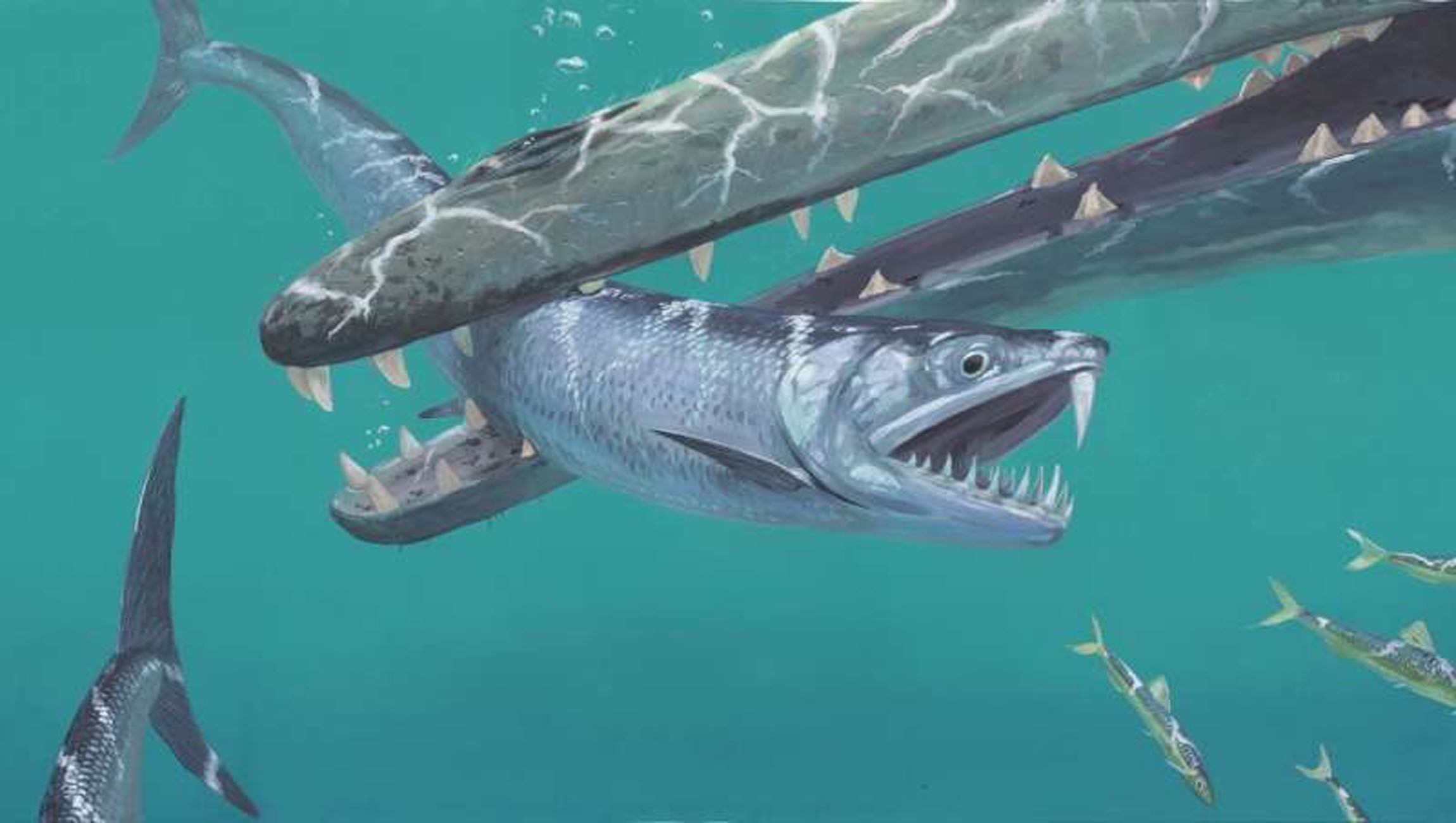Create a free profile to get unlimited access to exclusive videos, sweepstakes, and more!
Ancient saber-toothed anchovies morphed from dinosaur pizza toppings into predators

Prehistoric fish and other things that lurked underwater were bizarre enough, but you know things are getting weirder when the ancestors of the same anchovies that often end up on pizza were fearsome saber-toothed monsters.
After the apocalyptic asteroid that sent marine dinosaurs and other gargantuan sea creatures into extinction, smaller fish that were once snapped up as prey started to evolve. They ended up morphing into the recently discovered predator now known as Monosmilus chureloides. Now extinct, both of these anchovy predecessors lived around 45 million years ago, and were up to about three feet long with scary enough teeth—but the killer was a single ferocious fang that impaled whatever they wanted to eat.
“These large sizes in conjunction with well-developed caniniform dentition and slender mandibles consistent with rapid jaw closing suggest a predatory—and probably piscivorous—feeding ecology,” the team said in a study recently published in Royal Society Open Science.
By the way, Monosmilus literally means “single knife” and chureloides refers to a mythical vampire demon. You just don’t mess with that.
The fossils of these extinct saber-toothed terrors were unearthed by a team of scientists who re-examined some unidentified fossils in the Royal Belgian Institute of Natural Sciences in Brussels. Even though Monosmilus and its close fanged relative, Clupeopsis, both of which call to mind Vlad the Impaler, were monsters compared to their modern plankton-eating relatives. A micro-CAT scan revealed enough anchovy characteristics to prove that they were still early clupeiforms (ray-finned fish like herrings and anchovies). Monosmilus was the larger of the two and had even more imposing weapons. It easily beat out Clupeopsis with the size of its its saber tooth and most of its other teeth.
How did the Late Cretaceous and Paleogene extinction of other swimming predators turn into the attack of the killer anchovies? It seems as if the smaller, more primitive versions of these fish could have just gone off with a sigh of relief. The research team thinks otherwise.
“There are striking cases of apparently short-lived predatory…lineages in shallow marine settings that…might represent a response to new ecological opportunities in the early Palaeogene,” they said.
Absence of predators was one of those opportunities for Monosmilus and Clupeopsis. Surrounded by smaller creatures, they also started evolving from the hunted into hunters. Evolution over time supposedly makes animals larger if you believe Cope’s Rule. It was previously believed that prehistoric animals which survived mass extinctions like the dinopocalypse just kept getting growing and growing. If a mass extinction got them next time, whatever smaller animals were left got huge over time until they were wiped out. Cope’s Rule used to answer why most land animals today are nowhere near dino-sized. The last mass extinction Earth has seen was only 66 million years ago.
Dinosaurs and other enormous ancient things are now thought to have reached such a size because their body structures could support it, which is why nothing is bigger than the blue whale today. This hulking cetacean doesn’t have the burden of supporting its own weight on land. Neither did the monster anchovies. The space that the Late Cretaceous cleared up in the ocean also gave them more space to take up.
Just be glad those saber-tooth things eventually went the way of the dinosaurs, and anchovy evolution led to a pizza delivery box.


























